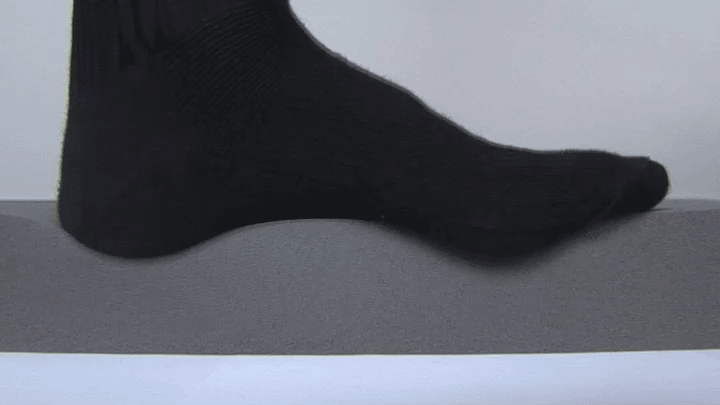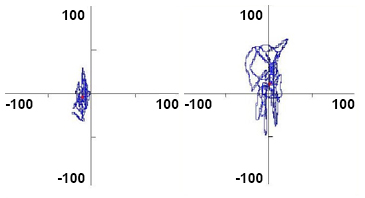The kybun mat more effective than conventional therapy mats
In February 2009 a team led by Dr Thomas Bochdansky, head of the department of Physical Medicine and Rehabilitation at the regional hospital in Feldkirch, Austria, studied the effect of the kybun mat on 31 test subjects, compared with a conventional therapy mat.
He tested the instability caused by the mats based on the distance from subjects’ centre of balance. The results showed that exercise on the kybun mat stimulates postural stability far more than on a conventional therapy mat. Dr Bochdansky believes that this intensive way of improving your balance boosts the functions of the deep muscles and, among other things, helps reduce pain, especially in the lumbar vertebrae.
How the kybun mat compares: huge demands placed on your balance system
The data show that greater control is needed to stand still on the kybun mat (= harder work). This is due to the high degree of instability which characterises the kybun mat, and can be seen on all frequency levels (see graph). According to Bochdansky this result indicates that exercising on the kybun mat makes demands on all the main control systems (visual, vestibular and somatosensory).The expert’s positive interpretation of the study results is that as the kybun mat allows the exercise intensity to be increased, this also improves its effect.
What does instability mean for your body?
Your body reacts very sensitively to instability, as in everyday life it indicates a high risk of a fall. Confronted with an unstable surface, your body thus automatically tries to regain stability. In therapy, instability can be used in a highly targeted manner as a stimulus to exercise the body’s natural stabilisation mechanisms. This improves your dynamic spine stabilisation (= postural stability, core stability), which is a key factor in the occurrence of backache over long distances.
What benefit does instability have during sports or in therapy and rehabilitation?
The trunk is the basis for any movement in your extremities. Generally, it can be said that the stronger that basis is, the better (more precise, targeted, extreme) the movement is. Exercising on a kybun mat leads to a general improvement in your balance and can thus help reduce your risk of a fall. The kybun mat can play a valuable part in every field of preventive work (primary, secondary and tertiary prevention). Moreover, instability can also play a major role in improving your dynamic control of your joints, leading in the case of degenerative illnesses to better kinematics and kinetics and thus ideally distributing the load on your joints.
“When measuring balance we found that the kybun mat provided the most instability compared with other exercise mats. From this we can conclude that balance training on the kybun mat can have a greater effect on dynamically stabilising the spine, and should thus have a high primary and secondary effect in preventing backache.” Dr. Thomas Bochdansky, head of the department of Physical Medicine and Rehabilitation at the regional hospital in Feldkirch, Austria.
This instability is also provided by the kybun shoe, so it follows that the kybun shoe can also provide effective exercise with its special walk-on-air sole.

 Sitting less and standing actively. Relieves tension, activates blood and lymph circulation and reduces pressure on the sole of the foot.
Sitting less and standing actively. Relieves tension, activates blood and lymph circulation and reduces pressure on the sole of the foot.




